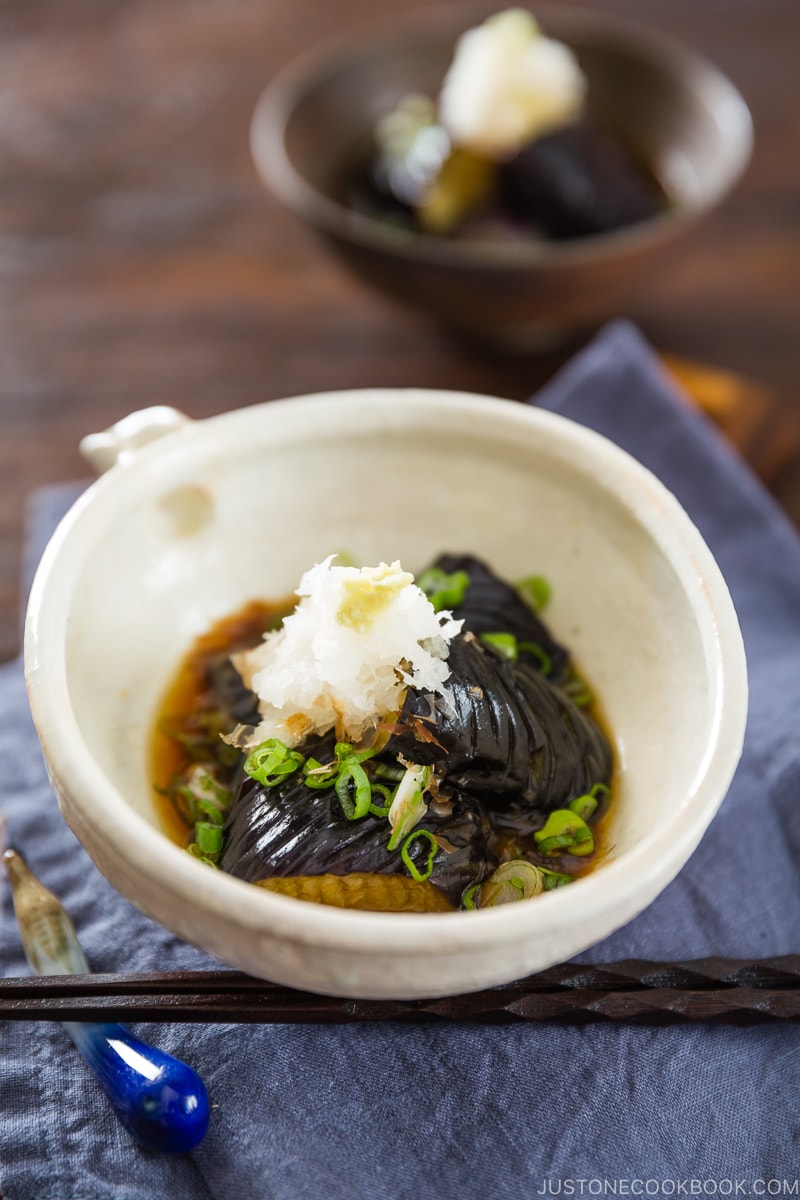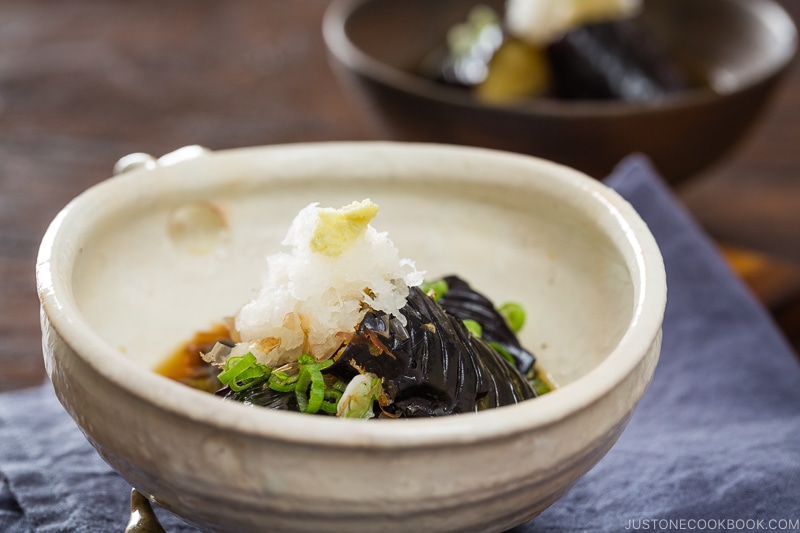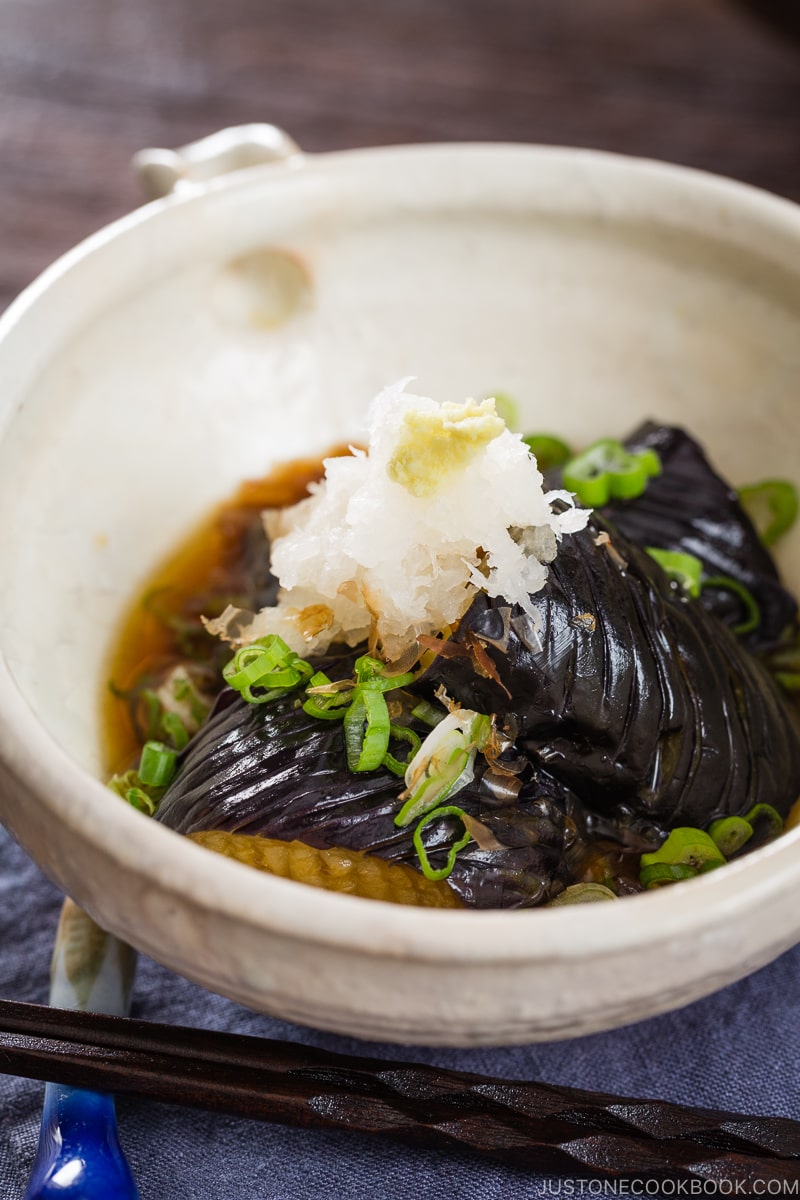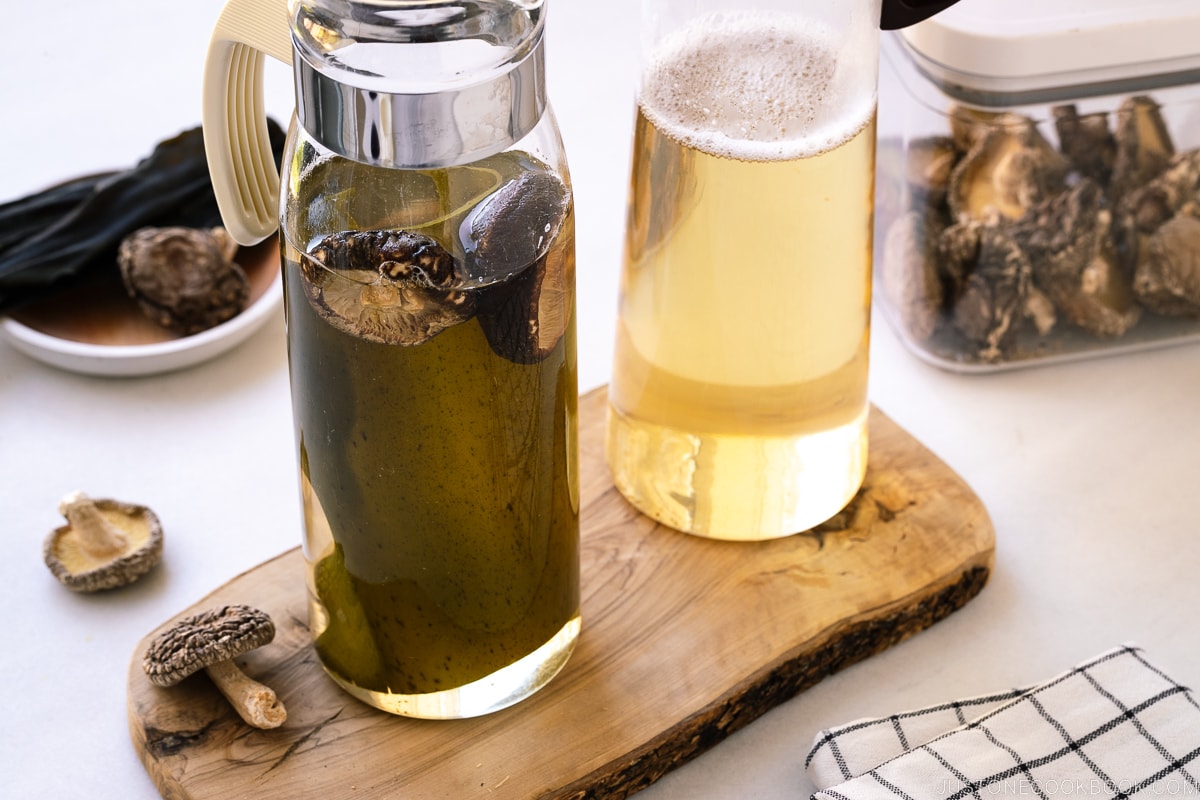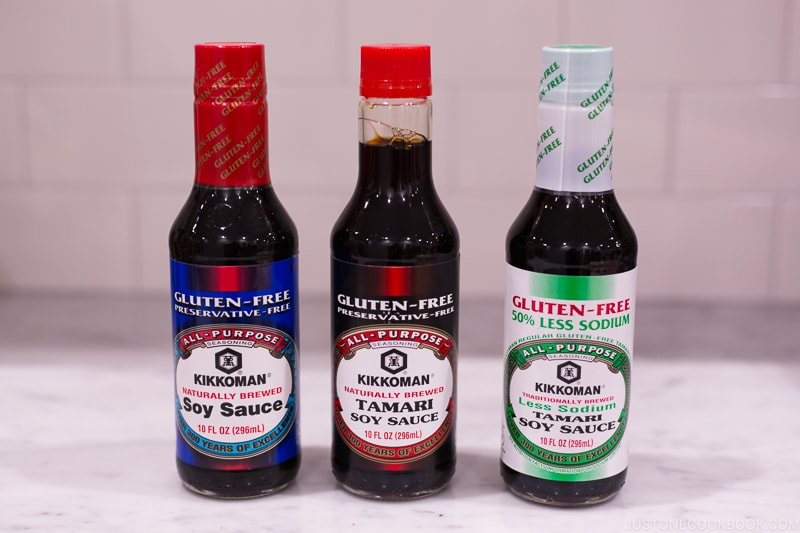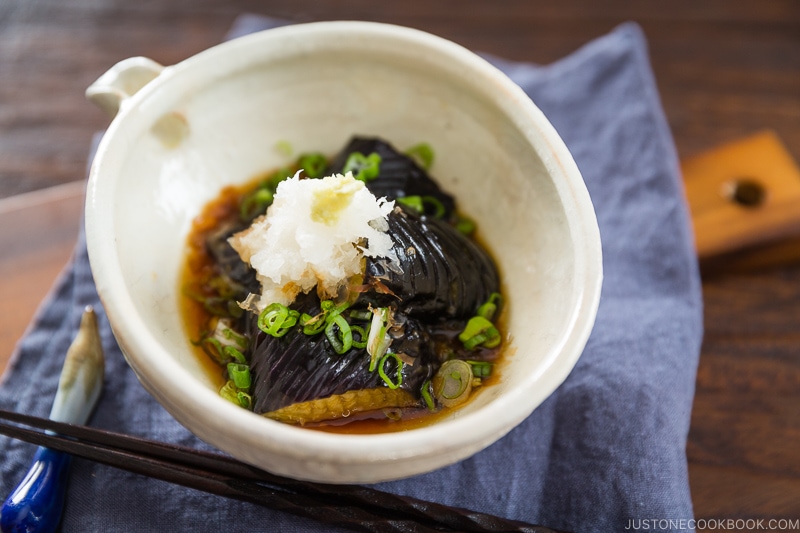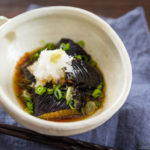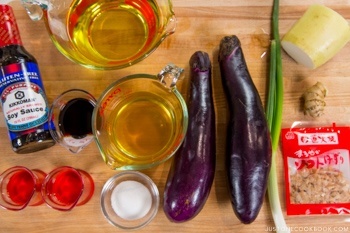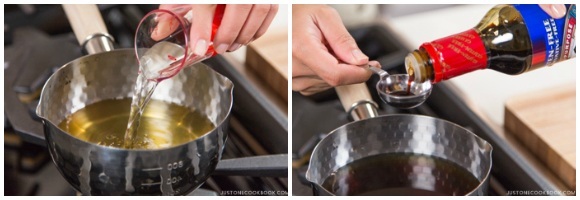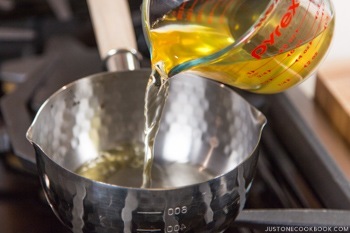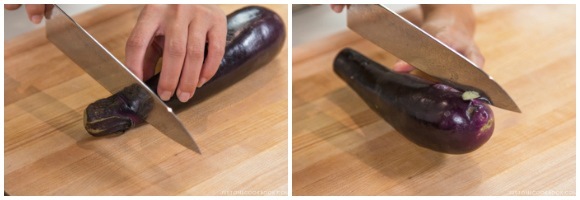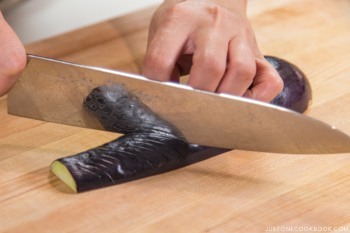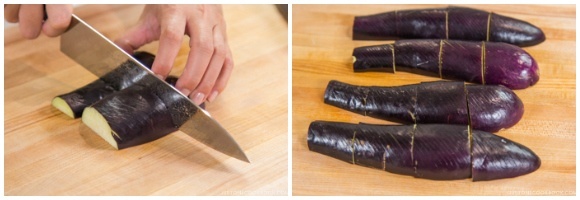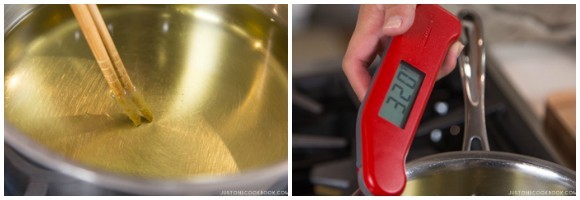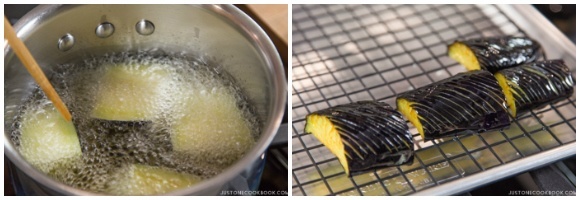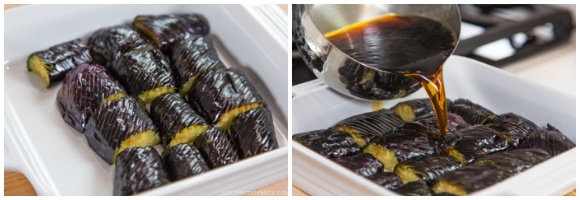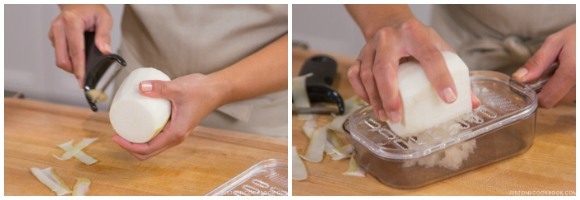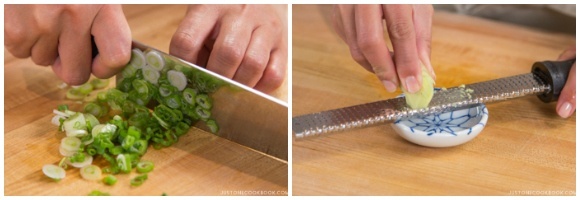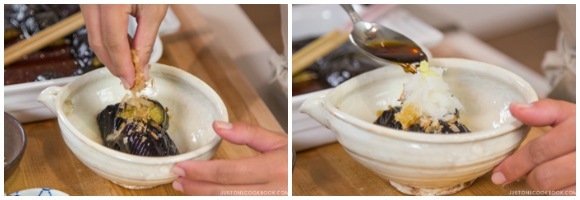While growing up in Japan, my mother made a lot of eggplant dishes and it always made me wondered what was so good about eggplant. Personally, I prefer crunchy and crispy foods, and mushy, soft eggplant was not one of my favorite vegetables. After I came to the U.S. and tried more varieties of eggplant dishes, I started to love eggplant. One of the eggplant recipes I was crazy about was a grilled eggplant sandwich with roasted bell pepper. Then I started to make Japanese eggplant dishes which I didn’t care much for before. Today’s recipe, Eggplant Agebitashi (茄子の揚げ浸し) has become one of my favorite go-to eggplant menus.
What is Eggplant Agebitashi?
Agebitashi means deep-fried and soaked. The dish is composed of deep-fried eggplant soaked in light dashi and soy sauce-based broth. It’s a simple dish, yet you’ll be surprised how delicious eggplant can be after it absorbed all the flavors in the dashi broth. If you’re a fan of eggplant, I know you’re going to love this dish!
Helpful Cooking Techniques
This dish requires some Japanese cooking techniques that you might not be familiar with. So let’s go over them first.
Tip 1: Suage (素揚げ)
Deep frying vegetables without coating any flour or batter is called Suage in Japanese. Su means natural or uncoated in this case, and age (pronounce a-geh) means deep-frying. You might wonder what’s the idea behind deep frying eggplants. Suage removes the bitterness of ingredients (such as in eggplant) and coating with oil prevents de-coloration of the eggplant. By cooking with oil, eggplant maintains its beautiful color. The eggplant will absorb oil first but then will release it after cooking. Brief deep frying in hot oil makes the ingredients crispy on the outside, and the remaining heat will slowly cook the inside of the ingredients. Once cooked, the tender eggplant easily absorbs the broth. You could also shallow fry eggplants. However, you have to make sure that the eggplant skin is nicely coated with oil at all times. I suggest combining the eggplant and oil in a large bowl first and rubbing the eggplant completely with oil with your hands first before you shallow fry. If you don’t, the water and moisture escaping from the eggplant will discolor and result in patchy skin.
Tip 2: Kakushibocho (隠し包丁)
Light scoring of the ingredients is called Kakushi-bocho in Japanese. Kakushi or kakusu means hidden and hide, and Bocho or hocho means a knife. This technique is used so that: Technically, we score the ingredient without making it too visible (so when you serve, it’s not obvious). That’s where the name “kakushi” or “hidden” comes from. We use this technique for ingredients that are hard to cook through and absorb flavors such as daikon, eggplant, and konnyaku. How much should we score? It really depends on the thickness of the ingredient, but remember not to score too deeply otherwise, it might break the ingredient apart. The same technique could also be called Kazari-bocho when the scoring looks pretty on the ingredient such as this eggplant. The purpose of scoring is the same, but it also looks decorative (“kazari”) so that’s how the name comes about. Can’t make good incisions? Sharpen your knife and practice will make it perfect. 🙂
Make It Vegetarian/Vegan-Friendly
You might wonder if this can be a vegetarian/vegan dish. Sure you can! Replace Awase Dashi (bonito flakes + kombu dashi) with Vegan Dashi made with kombu and dried shiitake mushrooms! And for garnish, omit sprinkling katsuobushi at the end. As easy as that!
Make Eggplant Agebitashi Gluten-Free
Many of you requested gluten-free recipes (thank you!), so I actually made this dish with gluten-free soy sauce. Of course, you can use regular soy sauce and you don’t need to adjust anything in the recipe. Kikkoman offers 3 varieties of gluten-free soy sauce, but for this recipe, I used regular gluten-free soy sauce (left) which tastes just like regular soy sauce. If you want to know more about this product, click here. I hope you enjoy making this Eggplant Agebitashi recipe! If you try it, don’t forget to share your picture on Instagram, Facebook, or Twitter with #JustOneCookbook. Thank you so much for reading, and till next time!
Similar Recipes
Japanese Grilled Eggplant (Yaki Nasu) Miso Glazed Eggplant
Wish to learn more about Japanese cooking? Sign up for our free newsletter to receive cooking tips & recipe updates! And stay in touch with me on Facebook, Pinterest, YouTube, and Instagram.
